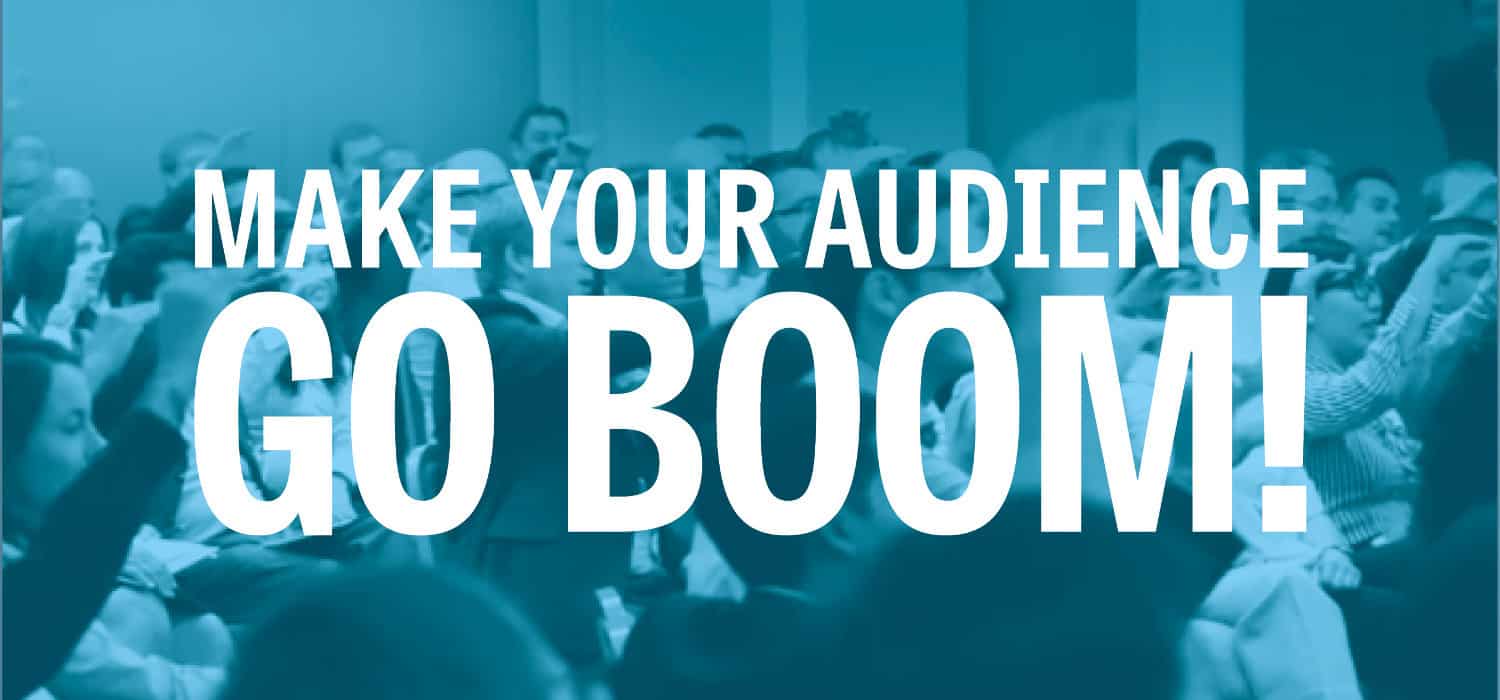How to Make Your Audience Go Boom!
Learn how to design a presentation pitch users will fall in love with.
1 - Content
Weak language is any word or phrase that does not add value to your message. “Um,” “Ah,” “So,” “Like,” “Basically” is not the only weak language that should be eliminated, but also when you take 5 sentences to say something you could have said in 2 sentences.
Strong language is when you can paint a picture or evoke an emotion with your content. Use examples that pull your audience into a scene; make it personal for them.
The first words out of your mouth should be a question, statement, statistic, joke, quote, scene, or story. Eliminate the ramp up of “Hi, my name is ________, and I’m here to tell you about ________” that doesn’t offer the audience anything new and exciting. Grab their attention immediately with something they don’t expect.
Audience Involvement
The audience is interested in their own agenda. When you get them thinking, sharing, talking, then they are open to your agenda.
Take a poll or conduct an “Around The Room” for each person to share a one-word or half-sentence answer on a question you pose to the group. Remember to give crystal clear instructions and repeat 2-3 times before execution: “We’ll start with Sally and work this way down the line. Each person share a half-sentence, top of mind, on ________”
You get great data on where their minds are at and they get emotionally connected to the topic!
Close with Action
You’ve just motivated your audience with your message and now it’s time for the Closing Ask.
Give them a simple action step that they can take to solidify the “A-Ha!”
Make it immediate: An action they can do on-site or that day is much more powerful then an action you ask them to do the next time or later that week.
Make it simple: A simple baby-step that everyone does is far more powerful than a huge commitment that no one does.
Example: “You’ve just heard all the benefits for keeping active and staying healthy. As you walk out today, let’s all make a promise to each other that no one takes the elevator to leave. We all take the stairs and on the way down.”
2 - Tone
Where are you on this chart?
This is your Tonal Starting Point and where it is for you is perfect for you. But if you stay in that one spot, one spot means one tone, which means monotone, which means BORING.
Use more of your entire range throughout your content to place emphasis on keywords. Loud, soft, fast, slow, but don’t forget the most important effect of all… PAUSE.
Be comfortable with silence. It’s your most powerful tool as a speaker. A lot of great things happen in the silence: The audience is understanding what you said, they’re absorbing it, they’re setting up the next thought. You can’t talk faster than the brain can hear, but you can talk too long for the brain to understand.
3 - Body
When you just have great content, it comes into the brain in mono. But when your hands tell the same story as your words, it comes into the brain in stereo; twice as powerful in terms of how memorable it is.
Waving hands in repeated motion is “Body Noise.” Take that energy to the next level by placing specific hand gestures to match the word.
You don’t have to gesture every word; matching 30-40% of your spoken content is world class. Identify your keywords and think of specific gestures to match those words.
4 - Space
Monospot is the boring cousin of monotone. Change up your position on stage, but be strategic with your movements. For example: Pacing back and forth can be distracting. Section your content into chapters and step to the side when you enter a new chapter. While in that chapter, take a small step toward your audience to place emphasis on specific content within that chapter.
Movements should be clean, crisp, and with purpose. Commit to the delivery.
